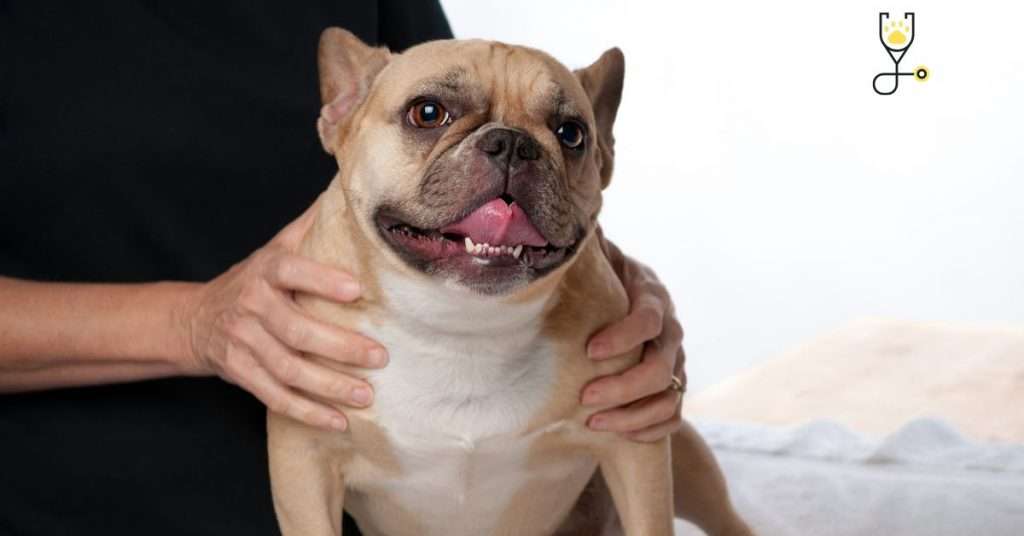When you take your dog for a walk and they suddenly pull on the leash, it’s easy to think that they’re just being naughty. However, there could be something else going on. Your dog might have pulled a muscle. In this post, we’ll explain how to treat pulled muscles in dogs and provide some tips on preventing them from happening in the first place.
Learn More: How to overcome the anxiety and depression of your dog?
What are pulled muscles?
Pulled muscles, also known as muscle strains, occur when the fibers in a muscle are stretched or torn. This can happen if your dog suddenly changes direction while running or if they try to stop themselves from falling. Muscle strains can be mild, moderate, or severe, depending on the extent of the damage.
Most susceptible breeds
-Dogs that are predisposed to joint problems such as hip dysplasia or elbow dysplasia.
-Dogs that are overweight or obese.
-Dogs that are very active or working dogs.
Breeds include:
-Labradors
-Golden Retrievers
-German Shepherds
What are the causes of pulled muscles in dogs?

– Sudden change in direction while running
– Trying to stop themselves from falling
– Over-exercising
– Poor conditioning
– Lack of warm-up before exercise
Read More About: Check Your Dog’s Temperature?
What are the symptoms of pulled muscles?
There are many potential symptoms of pulled muscles in dogs, which includes:
lameness
If your dog is walking with a limp or they are reluctant to put weight on one of its legs, it could be a sign that they have pulled a muscle.
Swelling
Another symptom of pulled muscles is swelling. You might notice that the affected area looks larger than usual. The skin may also be warm to the touch.
Tenderness
Your dog will likely be in a lot of pain if they have pulled a muscle. They may yelp or cry when you touch the affected area.
Muscle spasms
Muscle spasms are involuntary contractions of the muscles. If your dog has a pulled muscle, it may have muscle spasms in the affected area.
Read More: How To Stop Hair Fall In Dogs?
How to treat pulled muscles in dogs?
Treatments include:
Rest
The first thing you should do if your dog has pulled a muscle is to give them some rest. Avoid exercising them and let them take it easy for a few days. This will help the muscle heal and prevent further damage.
If your dog is still limping after a few days, make an appointment with your vet. They can prescribe pain medication to help make your dog more comfortable.
Ice
Applying ice to the affected area can help reduce inflammation and pain. Wrap an ice pack in a towel and place it on the area for 10-15 minutes at a time. Do this several times a day for the first few days after the injury.
Heat
If your dog is still experiencing pain after a few days, you can try applying heat to the affected area. This can help relax the muscles and reduce pain. Place a heating pad on the area for 10-15 minutes at a time. Do this several times a day as needed.
Massage
Gently massaging the affected muscle can help improve circulation and reduce pain. Ask your vet or a professional dog massage therapist how to properly massage the muscle.
Physical therapy
If your dog’s condition doesn’t improve with rest, ice, heat, and massage, they may need physical therapy. Physical therapy can help stretch and strengthen the muscle. Your vet can refer you to a certified canine physical therapist.

Surgery
In severe cases, surgery may be necessary to repair the damage. This is typically only done if other treatments haven’t worked or if the muscle has been completely torn.
Learn More: Liver problems in dogs-Best Guide
Preventions
– Avoid over-exercising your dog.
– Build up their exercise gradually so their muscles can adjust.
– Make sure they warm up before any physical activity.
– Keep them well-conditioned by exercising them regularly.
– Avoid sudden changes in direction while they are running or playing.
– Be cautious on slippery surfaces.
– If your dog is limping, take them to the vet.
Prognosis
The prognosis for dogs with pulled muscles is generally good. Most dogs will recover with rest and home treatment. However, some dogs may require surgery or physical therapy. The most important thing you can do is to prevent your dog from re-injuring the muscle by avoiding strenuous activity and keeping them well-conditioned. If you have any concerns, please speak to your veterinarian.
When to see the vet?
If your dog is limping or showing any other signs of pain, make an appointment with your veterinarian. They will be able to diagnose the problem and recommend treatment. In severe cases, surgery may be necessary. With proper treatment, most dogs will make a full recovery.
Conclusion
If your dog is showing signs of pain, it’s important to take them to the vet. They may have pulled a muscle and will need treatment. Rest, ice, heat, and massage can help treat the problem at home. In severe cases, surgery may be necessary. With proper treatment, most dogs will make a full recovery.
Faqs
How can I tell if my dog has pulled a muscle?
Your dog will likely be in a lot of pain if they have pulled a muscle. They may yelp or cry when you touch the affected area. There may also be swelling, bruising, or muscle spasms. If your dog is limping or showing any other signs of pain, make an appointment with your veterinarian.
How long does it take for a dog to recover from a pulled muscle?
Most dogs will recover from a pulled muscle within a few days to weeks. However, some dogs may require surgery or physical therapy. The most important thing you can do is to prevent your dog from re-injuring the muscle by avoiding strenuous activity and keeping them well-conditioned. If you have any concerns, please speak to your veterinarian.
Can a dog pull a muscle while walking?
Yes, dogs can pull muscles while walking if they make sudden changes in direction or slip on a slippery surface. It’s important to be cautious when walking your dog and to build up their exercise gradually so their muscles can adjust. Make sure they warm up before any physical activity.
How do I prevent my dog from pulling a muscle?
The best way to prevent your dog from pulling a muscle is to avoid over-exercising them. Build up their exercise gradually so their muscles can adjust. Make sure they warm up before any physical activity. Keep them well-conditioned by exercising them regularly. Avoid sudden changes in direction while they are running or playing. Be cautious on slippery surfaces. If your dog is limping, take them to the vet.
Read More About Common Dog Diseases & Their Prevention in our Ultimate Guide here.